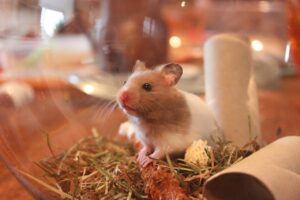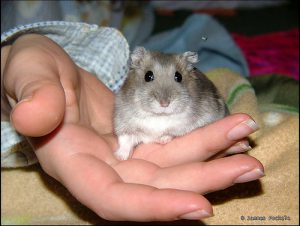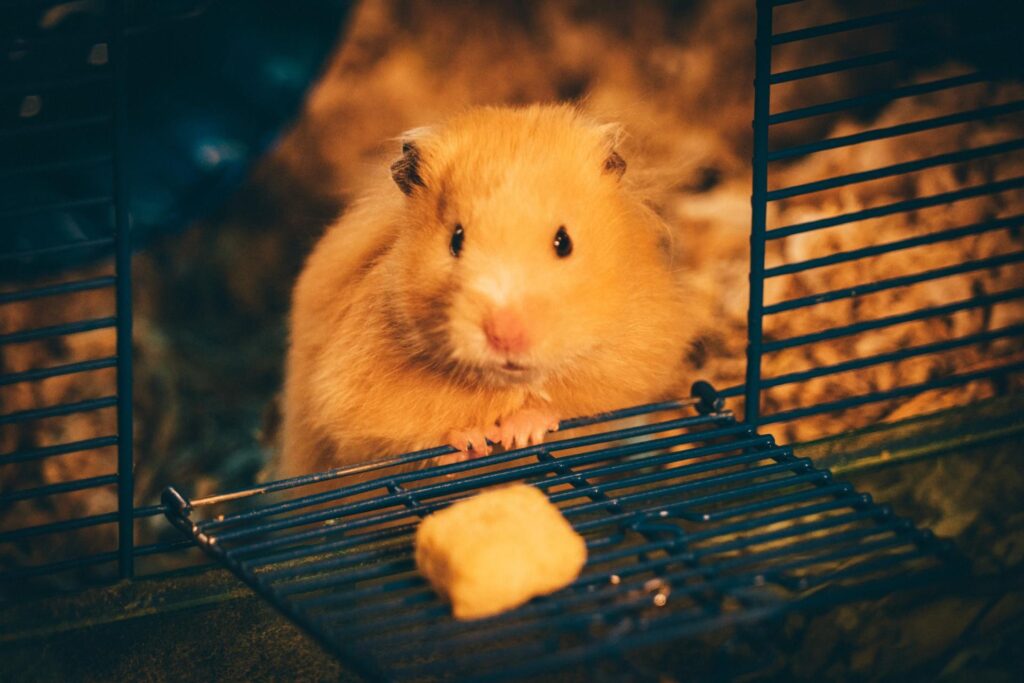Hamster’s behavior and character is really mysterious. This is the reason that we have put the maximum effort to clear the myths about the hamster. This article is about the Daily care and related diseases of the hamster. Many myths are known as truth to the people. This is an effort to clear those. Be sure to read the other three articles related to the myths about the hamsters.
- The Misunderstanding And Truth About Hamster
- The Truths about the Every Day Myths about hamster
- Feeding environment and cage size: The myths and truths about hamster
Misunderstanding:
Hamsters are very good novice pets and can be used to cultivate children’s sense of responsibility.
Truth:
Parents must supervise the process of taking care of hamsters and take the ultimate responsibility.
The hamster is a living entity, not a test object. Of course, hamsters cannot be taken care of because their children lack a sense of responsibility. Therefore, parents must supervise the process of raising hamsters to ensure that the welfare of hamsters is not reduced. In fact, many aspects show that hamsters are not the most suitable pets for children:
The main activities of hamsters are at night, and may not come out until 10 o’clock in the evening or even later. Children usually sleep earlier and sleep longer than adults: they will go to bed at 10:30. After the child gets up in the morning, the hamster may have gone to sleep. This allows children to observe hamster activities for a very short time and cannot enjoy the fun of keeping pets.
Hamsters are small and easily injured, so they need to be picked up carefully. However, most children are not mature enough to pick up the hamster carefully and easily hurt the hamster. Hamsters are predators in nature. Once they are irritated and frightened, they will bite the child’s hand without hesitation, causing the child to be injured.
The hamster is not an animal that is easy to get close to humans, and it may take several months to domesticate. This process is very long and many adults will lose patience. It is more difficult for children to maintain patience and interest in hamsters for a long time and adhere to the scientific domestication process.
Myth:
Taking care of hamsters is very simple, just change the water and clean the cage regularly
Truth:
The care a hamster needs is never limited to feeding and cleaning the cage
Many people think that hamsters are a very good animal to feed. As long as the water and food are changed regularly, and the cages are cleaned, hamsters can be kept well. Therefore, it is a very suitable animal for children. There are certain misunderstandings in this view. In order to make hamster life happy, healthy and safe, you must have but not limited to the following knowledge:
- The minimum and recommended area for hamsters
- How to make landscaping in line with hamsters’ habits in nature
- Which hamster supplies are safe
- What is a comprehensive and balanced recipe?
- How to gradually domesticate a hamster
- What are the symptoms of hamsters getting sick?
- Reserve a veterinary reserve and know where the nearest veterinarian is
- How to deal with emergencies (escape, illness, injury, etc.)
- Compared with cats and dogs, hamsters are better taken care of, but it is never easy to change the water, feed, and clean the cage easily.
- They also need comprehensive nursing knowledge to take care of them well.
Misunderstanding:
The hamster tastes great, so keep away from people
The truth:
hamsters have the same taste as other animals, but not too unacceptable
Feeling that hamsters taste great is an important reason why many parents dislike their children raising hamsters. But the hamster is really wrong. Whether the smell is big or not is relatively speaking. In fact, every animal in the world, including humans, has a certain smell. Because hamsters are the smallest pets, from this perspective, hamsters have the smallest taste. Some owners report that female Syrian hamsters have a musky-like smell, which is especially strong during estrus.
Male dwarf hamsters also have a stronger urine smell. Therefore, whether the smell is great depends on the individual hamster and the owner’s acceptance of the smell. But overall, the smell of hamsters is not too unacceptable.
The reason why the hamster tastes great is actually related to the owner. Think about it, when we raise dogs, we have to teach them to poop. When raising a cat, give cat litter. Regular shoveling of shit and urine is also essential. If there is no toilet in the human world, there will be feces and urine everywhere, and the human smell will not smell good. However, we have seen that the way some owners raise hamsters is actually not suitable because they are worried that hamsters will have heat stroke.

A friend of mine once taught me to put only a thin layer of bedding. In this case, the litter can’t absorb the smell. What we smell is not so much the body odor of hamsters, but rather the smell of hamster excrement. The litter produced by the merchant (wood chips, paper cotton, etc.), even if it has no fragrance, has a certain ability to absorb taste. From the perspective of odor absorption capacity, the odor absorption capacity of sawdust is higher than that of hemp bedding and paper cotton.
If you are worried about the taste, you can use more. If we provide hamsters with enough litter, the smell of hamsters is minimal, almost only the smell of litter. Do hamsters really suffer from heatstroke due to thick bedding? In fact, if the bedding is thick enough (15cm+), the lower layer will be cool and not very hot. Even hamsters can get into the bottom wood chips during the day. If you are really worried about getting too hot, you can also use bedding with stronger heat dissipation capabilities such as hemp poles and wood chips.
You can even provide simple summer facilities such as ice rooms and cold plates. In short, providing enough litter is not only to meet the life needs of hamsters but also to benefit the owner. Hamsters are actually very clean animals. As long as the cages are spread out, many hamsters will go to bathe in the sand, have a fixed place to pee, and store their poop separately. When there is enough litter, the owner is very trouble-free. As long as it is cleaned regularly, the entire cage is rarely cleaned.
Myth:
In order to ensure hygiene and health, hamster cages must be cleaned every week
Truth:
The frequency of hamster cage cleaning depends on a series of factors, and there is no single correct answer
The cage cleaning mentioned here refers to the large-scale cleaning of the entire cage, full replacement of the litter, all the toys, and the cage. Partial cleaning is not within the scope of this discussion. Partial cleaning should be done frequently. This is also for the health of the hamster. This process does not take too much time.
The saying that the entire cage is cleaned weekly is actually given to the old breeding conditions. In the past, we thought that a hamster was a small animal and naturally did not need a large cage. I remember when I was in high school, I saw people in the dormitory raising hamsters in a castle cage, using special lemon-flavored bath sand, lavender sawdust and jolly hamster food. I thought it was amazing and advanced.
Afterward, everyone gradually realized that the place where hamsters live could not be too small, and began to push 47 bases 60 bases, 17 runs or 20 runs, and they had to eat imported food. Now everyone’s breeding concept is improving again. They push 0.5 square meter cages, 20 runs/30 runs, and eat well-balanced food. When the breeding area is small, the cage will quickly become dirty and smelly, of course, it can only be cleaned weekly. But when the cage gradually gets bigger, the situation is very different. After the cage becomes larger, the hamster will gradually develop the habit of going to the toilet at a fixed point, and the rest of the cage will be easier to keep clean.
As long as the hamster cage is kept clean and smell-free, it is no problem to clean the large cage even once a few months. The litter of my cage has not been changed for 5 months, but there is no smell, and the hamster is not unhealthy. But recently, due to the dust in the place where I live and the dust accumulated on the litter, the respiratory tract of the hamster will be affected, so I decided to replace all the litter in the near future.
By the way, too frequent large-scale cleaning is actually not a good thing for hamsters. We know that hamsters’ eyesight is actually scumbag, and their skills are all about smell and hearing. They are a creature that relies heavily on smell. After the entire cage is cleaned, the smells left on the litter and toys are gone.
It is a new and unfamiliar world for hamsters. Hamsters are full of anxiety, which is actually not good for hamsters’ health. Even when cleaning a large area of the cage, it is best to leave a part of the old litter and mix it with the new litter. Toys are also cleaned up in batches, part by part so that the smell of all toys will not disappear in a moment.
Final Words
Hamster is not with us for centuries. This is only about the recent past when we have adopted it as the domestic pet. This is the reason that many things are not known well about the hamsters, we have dig out the information and reached the truth about the hamster. Total of four articles are available on our website related to this issue. Be sure to read all the articles one by one.


